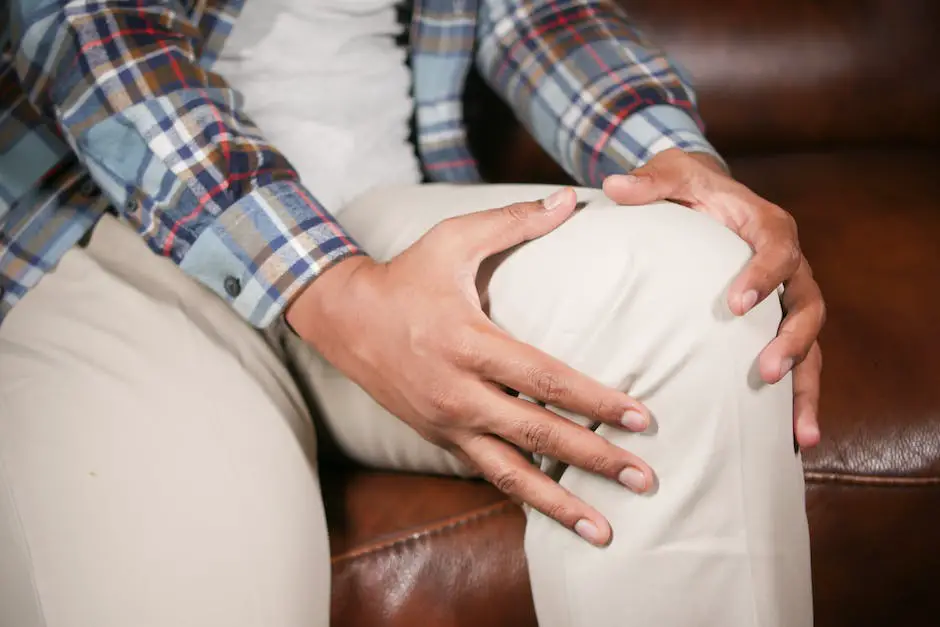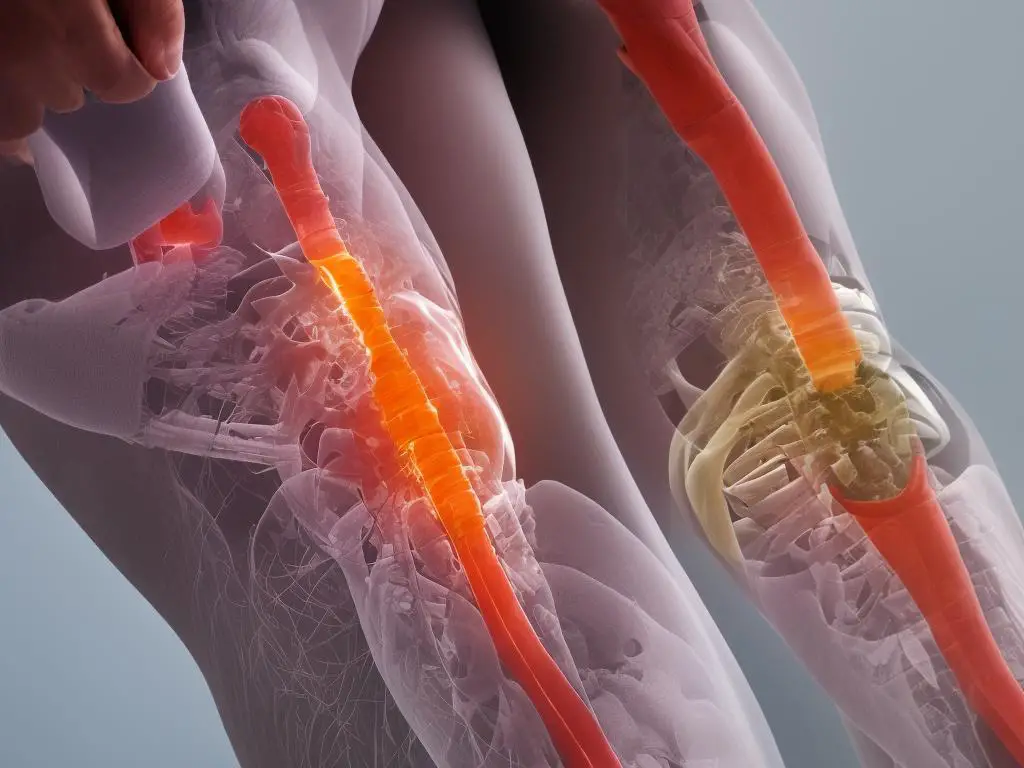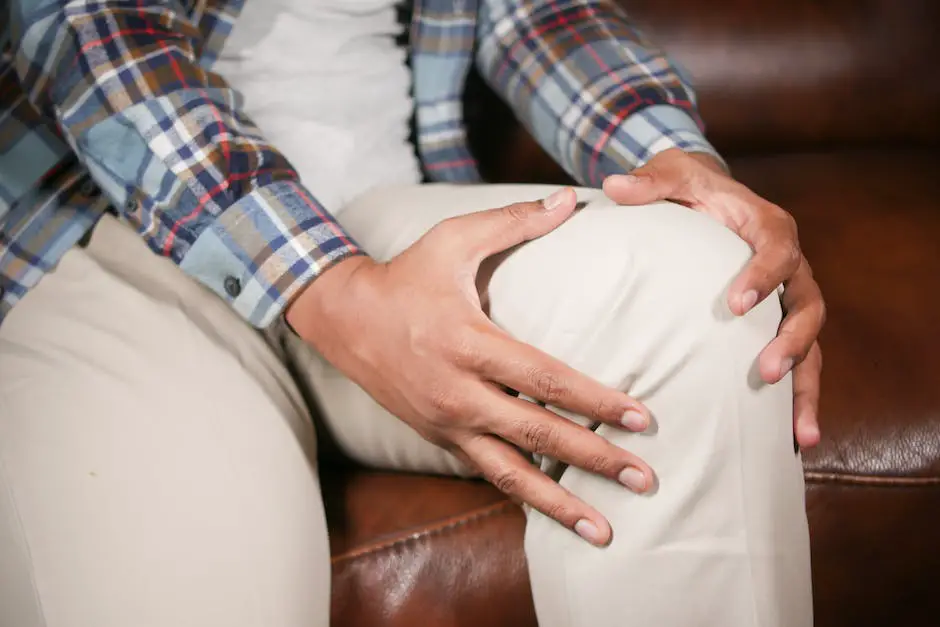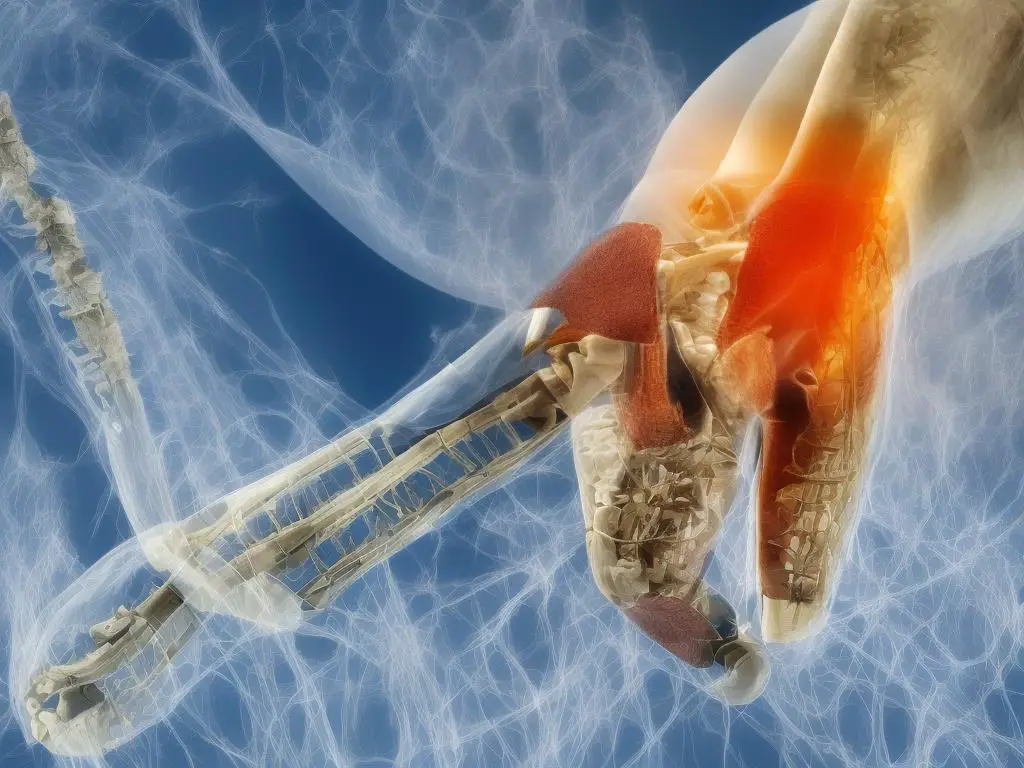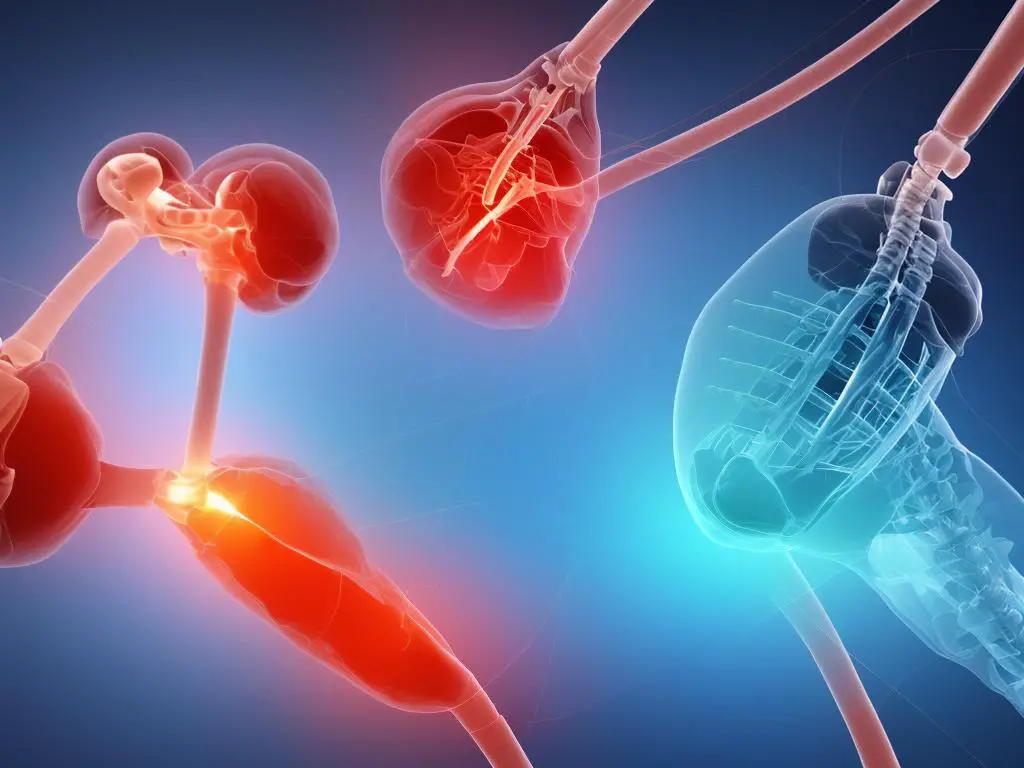Living with knee osteoarthritis often means overcoming daily hurdles, one of the most common being managing stairs. Understandably, the knee pain and inflammation that worsens with age can pose significant challenges when climbing or descending stairs, but it doesn’t have to limit your independence. This piece aims to shed light on the causes of such pain, elucidate why it often exacerbates with age and discuss the critical role of weight management in easing stress on the joints. Furthermore, you will gather practical techniques for safe stair navigation, including leading with the stronger leg, utilizing aids like canes, and even the prospect of descending backward to lessen the strain. Familiarize yourself with these invaluable tips on managing stairs with osteoarthritis.
Understanding Knee Osteoarthritis
Understanding Knee Osteoarthritis: The Monster Upstairs
Let me introduce you to knee osteoarthritis, the character at the crux of our story. Like the invisible monster looming beneath your child’s bed, it remains silent until you take that first optimistic step up the stairs. Suddenly, as if provoked by your audacity, it flares up and delivers a jolt of pain that feels like a lightning bolt searing through your knee. Unpredictable, capricious, and loathed, osteoarthritis is indeed a formidable antagonist in your march up the staircase.
Diagnosing the Pain: Tracing the Lines of Inflammation
You may ask, “Why does my knee pain worsen when I venture up or down a flight of stairs?” To explain this, let’s veer down to the murky realm of osteoarthritis. Imagine the protective cartilage on the ends of your bones as a well-padded pair of gloves. Osteoarthritis essentially wears away at this padding, exposing your bones to rub directly against each other.
Scaling stairs demands a certain level of knee flexion, and in this compromised state, your joints scream out in pain when you subject them to increased pressure or motion. Then, as if our villain wasn’t cruel enough already, it instigates inflammation in your joints to keep you in a perennial state of discomfort.
The Monstrous March of Age
You might wonder, “Why does osteoarthritis worsen with age? Why am I being penalized for growing old?” Well, it’s not so much about being penalized as much as it is about wear and tear.
With the turning calendar pages, your cartilage loses its resilience and ability to recuperate. This deterioration opens up the battleground for osteoarthritis, and the further you journey into the winding paths of the years, the fiercer this internal battle gets.
Weight Management: Your Assassin’s Tool
So, the stakes are raised, the villain is revealed, and you find yourself backed into a corner. What’s your defense strategy? Enter weight management.
Managing your weight is as essential as that first gulp of air after surfacing from icy ocean depths. Why? Simply put, excessive weight piles on undue stress on your joints, particularly your knees. Losing a single pound of weight, in fact, can lift about four pounds of pressure off your knee during each step you take.
Weight loss doesn’t just alleviate symptoms; it could also slow the progression of osteoarthritis. By keeping tabs on your weight, you’re essentially taking the reins and battling the malevolent orchestrator of your pain. You’re casting the first stone in this David verses Goliath contest, marking the beginning of the end for your knee osteoarthritis.
In the end, your bout with osteoarthritis does not signify an end to your stair-climbing days. It just emphasizes the need for extra vigilance and warfare with a never-say-die attitude. Indeed, with your newfound understanding of osteoarthritis, the hardships of stairs can now reclaim their place as mere architecture and not monstrous adversaries.

Techniques for Stair Climbing and Descending
Braving the Stairway: Climbing With Osteoarthritis
Imagine yourself at the foot of a staircase. Once upon a time, these stairs were merely steps, a means to ascend to higher planes and descend to lower ones. However, as osteoarthritis entered the scene, the staircase changed. It transformed from an inconsequential piece of architecture to an obstacle course, a source of strain and discomfort. But remember, just as you’ve bravely encountered this life with its ups and downs, you can do the same with this staircase. Here’s how.
Step Up: Climbing Techniques for Osteoarthritis Patients
First and foremost, know your strengths. Osteoarthritis might have taken a toll on your body, but your spirit remains strong. Remember this as you mount the stairs, always leading with your stronger leg. This might appear like a minor adjustment, but you would be surprised by the world of difference it makes. There’s no harm in taking your time to move from step to step either. This isn’t a race; it’s a trial in resilience, and your victory lies in reaching the top, no matter how long it takes.
Offering You A Hand: Using Assisting Devices
If a cane or crutches are part of your daily life, view these devices not as beacons of dependency but as tools of independence. They offer you the balance and support you need to topple these towering stairs. When ascending, place your cane or crutch on the step first, followed by your stronger leg, and then your weaker leg. For descending, the order should be reversed, that is, the weaker leg should go down first, followed by the stronger one with the cane or crutch.
Taking A Step Back: Descending Backwards
Descending stairs with osteoarthritis is often more challenging than ascending. However, a simple trick could ease the strain this action puts on your knees: descend the stairs backwards. Yes, it might look odd to onlookers, but if it saves you from discomfort, who cares?
This practice might feel strange at first, even scary, given your inability to see the stairs in front of you. But over time, it will become more natural, and the benefit it provides to your knee joint will be evident. Make sure to hold onto the stair rail for support and move with caution.
The Bottom Line
Navigating stairs with osteoarthritis is indeed a challenge, but remember, challenges are merely opportunities in disguise. With the right techniques, patience, and a handful of courage, you can climb or descend any staircase life leads you to. After all, osteoarthritis may reside in your bones, but determination runs in your blood.

Photo by hongochai10 on Unsplash
Physical Therapy and Strength Training
The Battle Against Stairs: Osteoarthritis and Mobility
There’s a dragon at the end of your path, clad in steep angles and harsh corners. It’s a staircase, and your opponent in this struggle is osteoarthritis. Although each step might seem insurmountable, with physical therapy and strength training, you can build the skills and confidence necessary to defeat it.
Battling Through Pain: Managing Osteoarthritic Pain
Before undertaking any exercise, it’s essential to have a plan to manage the pain caused by osteoarthritis. It’s crucial to never start a workout cold – warm up your joints with warm packs, a warm bath, or gentle motions to get the blood flowing. Cooling down after exercise is just as essential – ice packs can come to your aid to reduce inflammation. For severe pain, refer to a healthcare professional. They can provide medications and personalized recommendations.
Building Foundations: Mobility and Stability Exercises
To confront stairs with confidence, it’s key to focus on the lower body muscles, particularly the quadriceps. These muscles are the primary guardians of your knee joints and provide the necessary power when climbing each step. Here are some exercises to utilize:
- Seated Leg Raises: This exercise can strengthen your quadriceps without weight-bearing stress. While sitting on a firm chair, straighten one leg, keeping the other foot on the ground. Hold the raised leg for a moment, then lower it. Repeat this ten times for each leg.
- Step Ups: Start with a small and wide step platform. Stand in front of it, place one foot on the step, and let the quadriceps lift your body. Gently lower yourself. Repeat this ten times for each leg.
- Leg Press: If you have access to gym equipment, a leg press machine can help. Be sure to make the motion slowly and controlled, and ask a professional for assistance if you are unsure how to use the machine.
The Art of Walking: Gait Therapy
Gait therapy is just as crucial in your battle against osteoarthritis. With a proper walking form, you can minimize the impact on your knees while ascending or descending stairs. Consult with a physical therapist; they can evaluate your gait and provide constructive feedback.
Conquer Your Mountain: Walking Up Stairs
While climbing steps, remember to step up with the stronger leg and down with the weaker one. This ‘good up, bad down’ rule can help you handle stairs more efficiently and safely. If there’s a railing, use it to provide more support.
Confronting the stairs when struggling with osteoarthritis might seem like an uphill battle. However, with physical therapy and strength training, you can restore your mobility, stability, and strength. Start with lower body exercises, focusing on your quadriceps; explore gait therapy and remember the ‘good up, bad down’ rule. Above all, always consult with your healthcare provider before starting any new workout regimen. These are the steps to conquering your stair-climbing fear and maintaining a level of independence in your life.

Prevention and Treatment Options
The Siege of Osteoarthritis: Navigating the Stair Battles
The first sense of discomfort surges through your knee, a pinprick warning of the turbulent storm building within. Perhaps it is the descent of the ornate mahogany stairs, or the swift climb of the concrete steps to your family’s doorway. Battles ensue on these staircases, skirmishes between the debilitating symptoms of osteoarthritis and your wish to continue the daily rhythm of life undeterred.
Strategy for Prevention: Diminishing Risk of Falls
Safe traversal of your stairway fortress is paramount. Begin by installing handrails if none exist, or double check sturdiness if they are already present. Your grip upon these lifelines aids balance, reducing the chance of losing your footing and ending up a casualty of gravity.
Factor in proper lighting. Shadows can warp perception and cloud your judgment, potentially leading to missteps. Ensure stairs are well-lit and you can see each step clearly. In those twilight hours, consider using night lights to guide your path.
Rethink your footwear. Forget the charm of fluffy slippers or the allure of those sleek high heels; prioritize traction and comfort. Rubber-soled shoes with adequate arch support make excellent allies in this stair battle.
Calling the Reinforcements: When to Seek Treatment
Persistent symptoms become red flags signaling it’s time to muster your medical army. If pain worsens, swelling becomes a common occurrence, or joint mobility declines markedly, you need to book an appointment with an arthritis specialist.
A rheumatologist, fortified with years of training specifically in joint disorders, becomes your trusted general in the battle against osteoarthritis. Shared decision-making between you and your specialist fosters a battle plan tailored to meet your individual needs.
The Arsenal: Treatment Options
Medications
Your specialist can prescribe medications aiming to relieve pain and inflammation – the culprits behind your difficulty when scaling staircases. Over-the-counter pain relievers like acetaminophen or topicals capsacin could serve as your first line of defense.
In dire circumstances, corticosteroids can alleviate persistent pain. Administered either orally or through injections, these powerful drugs are akin to cannons in your arthrological arsenal.
Physical Therapy
Physical therapy instills resilience in your body, training your muscles to better support ailing joints and enhance balance. Stair climbing will become less daunting as your strength grows. Your therapist, an experienced sergeant in the field, can coach you through therapeutic exercises and stretching routines – your daily drill for healthier joints.
Surgical Options
Joint replacement surgery, the most invasive strategy, enters the battlefield when other treatments have failed to quell the uprising within your joints. It’s akin to a drastic fortress renovation, trading out your worn-out joint for an artificial one.
In the end, the siege of osteoarthritis is a tough campaign, with plenty of battles fought on your household stairs. Armed with knowledge, the right team of experts by your side, and effective treatment strategies, you can navigate this battlefield with confidence.

With time, patience, and practiced techniques, managing stairs with knee osteoarthritis can transition from a daunting obstacle to a surmountable challenge. By focusing on strengthening exercises, gait therapy, and fall prevention strategies, you can maintain mobility and independence. Remember, underestimating persistent symptoms could lead down a painful road. Thus, it is essential to consult with arthritis specialists and explore targeted treatments to manage osteoarthritis effectively. Equipped with the right knowledge, practice, and medical advice, there should be no staircase too steep for you to conquer. Keep moving forward, one step at a time.














